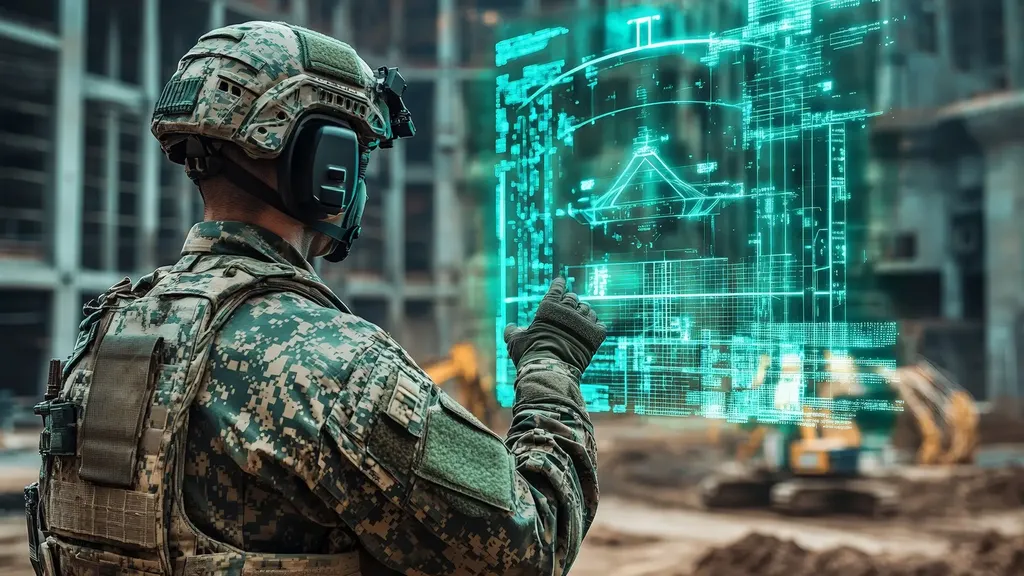In the realm of military training, the creation of complex and adaptable scenarios has long been a laborious and resource-intensive process. Traditional methods of scenario generation often fall short of producing the nuanced and dynamic environments necessary for effective simulation-based training. However, a new study led by researchers Soham Hans, Volkan Ustun, Benjamin Nye, James Sterrett, and Matthew Green introduces a groundbreaking multi-agent, multi-modal reasoning framework that leverages Large Language Models (LLMs) to revolutionize this process.
The research addresses a critical gap in prior efforts, which struggled to generate sufficiently complex or adaptable scenarios due to the limitations of pre-LLM AI tools. The team’s innovative approach decomposes scenario generation into a hierarchy of subproblems, each with a defined role for AI tools. These roles include generating options for human authors to select from, producing candidate products for human approval or modification, and generating textual artifacts fully automatically. This structured approach ensures that the AI tools are used in a way that complements human expertise, enhancing rather than replacing it.
The framework employs specialized LLM-based agents to tackle distinct subproblems. Each agent receives input from preceding subproblem agents, integrating both text-based scenario details and visual information such as map features and unit positions. This integration allows the agents to apply specialized reasoning to produce appropriate outputs. Subsequent agents then process these outputs sequentially, preserving logical consistency and ensuring accurate document generation. This multi-agent strategy overcomes the limitations of basic prompting or single-agent approaches, which often struggle with highly complex tasks.
One of the key contributions of this research is the validation of the framework through a proof-of-concept that generates the scheme of maneuver and movement section of an Operations Order (OPORD). This demonstration includes estimating map positions and movements, showcasing the framework’s feasibility and accuracy. The results highlight the potential of LLM-driven multi-agent systems to generate coherent, nuanced documents and adapt dynamically to changing conditions.
The implications of this research are profound for the defence and security sector. By automating the generation of critical training artifacts, such as OPORDs, the framework can significantly reduce the time and resources required for scenario creation. This, in turn, allows for more frequent and varied training scenarios, enhancing the readiness and effectiveness of military personnel. Furthermore, the adaptability of the framework means it can be tailored to a wide range of training needs, from small-unit tactics to large-scale operations.
The study also underscores the importance of human-AI collaboration in defence applications. By structuring the scenario generation process to involve human oversight and input at key stages, the framework ensures that the final products are both technically sound and operationally relevant. This collaborative approach not only improves the quality of the training scenarios but also builds trust in AI tools among military personnel.
As the defence sector continues to explore the potential of AI and machine learning, the findings of this research provide a compelling example of how these technologies can be harnessed to address real-world challenges. The multi-agent, multi-modal reasoning framework represents a significant step forward in the automation of scenario generation, offering a powerful tool for enhancing military training and preparedness. By embracing such innovations, the defence community can stay ahead of evolving threats and ensure that its personnel are equipped with the skills and knowledge needed to succeed in complex and dynamic environments. Read the original research paper here.

